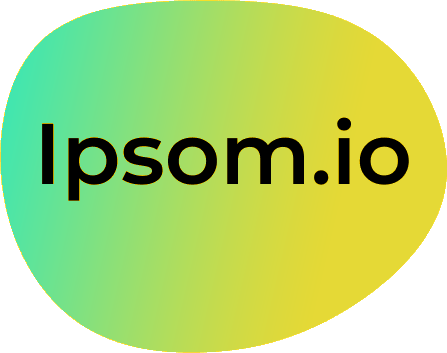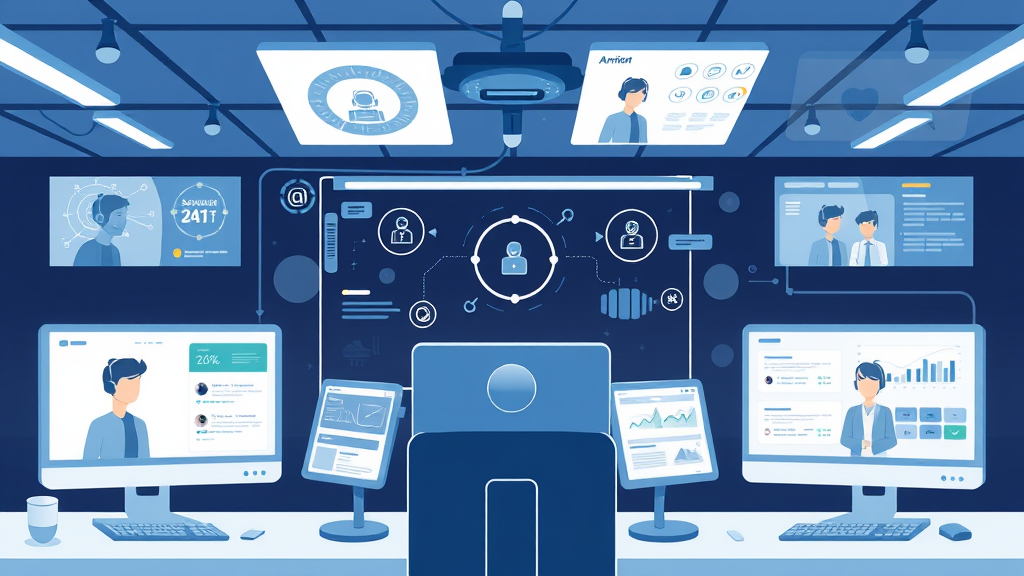Call center automation is revolutionizing customer service by integrating advanced technologies to streamline operations, enhance customer experiences, and reduce operational costs. By automating routine tasks, call centers can focus on delivering personalized and efficient support.
Key Findings
- Enhanced Efficiency: Automation reduces manual workloads, allowing agents to concentrate on complex issues.
- Cost Reduction: Implementing automation can significantly lower operational expenses by minimizing the need for a large human workforce.
- Improved Customer Satisfaction: Automated systems provide 24/7 support, reducing wait times and enhancing the overall customer experience.
- Scalability: Automation enables call centers to handle increasing volumes of customer inquiries without compromising service quality.
- Data-Driven Insights: Automated processes collect and analyze data efficiently, offering valuable insights into customer behavior and preferences.
Understanding Call Center Automation: Definition and Importance
Call center automation involves the integration of advanced technologies to streamline and optimize customer service operations. By automating routine and repetitive tasks, businesses can enhance efficiency, reduce operational costs, and improve the overall customer experience.
Key components of call center automation include:
-
Artificial Intelligence (AI) and Machine Learning (ML): These technologies power intelligent chatbots and virtual assistants capable of handling customer inquiries in real time, learning from interactions to improve responses over time.
-
Robotic Process Automation (RPA): RPA automates repetitive tasks such as data entry and ticket creation, minimizing human error and freeing agents to focus on complex interactions.
-
Interactive Voice Response (IVR) Systems: IVR systems allow customers to interact with automated menus to resolve common issues without speaking to a live agent, improving efficiency and reducing wait times.
-
Automatic Call Distribution (ACD): ACD systems route incoming calls to the appropriate agents based on predefined criteria, ensuring efficient handling of customer inquiries.
The importance of call center automation is underscored by several key benefits:
-
Improved Customer Experience: Automation enables quick and accurate responses to customer inquiries, ensuring a seamless and satisfying experience. AI-powered chatbots, for instance, can handle routine queries, freeing up agents to focus on more complex issues.
-
Cost Efficiency: By automating repetitive tasks, businesses can significantly reduce operational costs. Automation technologies can also help optimize workforce management, ensuring that agents are utilized efficiently and resources are allocated effectively.
-
Enhanced Agent Productivity: Automation tools assist agents in handling customer interactions more efficiently. For example, AI-powered systems can provide real-time suggestions and relevant information, enabling agents to resolve issues quickly and accurately.
-
Scalability: Automation allows businesses to handle increased call volumes and customer inquiries without the need for additional staff. This scalability is crucial for growing businesses and those experiencing seasonal fluctuations in demand.
By integrating automation into call center operations, businesses can achieve a balance between technological efficiency and human touch, leading to enhanced customer satisfaction and operational excellence.
External Sources: Learn More
Streamline your success—unlock the power of automation at ipsom.io or drop us a line at office@ipsom.io.
Key Technologies Driving Call Center Automation
Call center automation leverages various advanced technologies to enhance efficiency, reduce operational costs, and improve customer satisfaction. Below are key technologies driving this transformation:
Artificial Intelligence (AI) and Machine Learning (ML): AI and ML power intelligent chatbots and virtual assistants capable of handling customer inquiries in real time. These systems learn from interactions, improving their responses over time to provide more human-like and accurate assistance.
Robotic Process Automation (RPA): RPA automates repetitive tasks such as data entry, ticket creation, and follow-ups. By minimizing human error and freeing agents to focus on complex interactions, RPA enhances operational efficiency.
Natural Language Processing (NLP): NLP enables systems to understand and interpret human speech, facilitating sophisticated voice assistants and self-service Interactive Voice Response (IVR) systems. This technology improves the accuracy and relevance of automated responses.
Interactive Voice Response (IVR) Systems: Modern IVR platforms, often powered by AI, route calls, authenticate customers, and resolve simple queries, reducing the need for live agents and enhancing customer experience.
Predictive Analytics: By analyzing historical data, predictive analytics forecast call volumes, peak hours, and customer behavior. This allows for optimized staffing, reduced wait times, and improved service quality.
Omnichannel Integration: Automated contact centers integrate multiple communication channels—phone, email, chat, and social media—to ensure seamless and consistent customer interactions across platforms.
These technologies collectively transform call center operations, making them more efficient, responsive, and customer-centric.
External Sources: Learn More
Transform your operations and embrace growth—visit ipsom.io or connect with us at office@ipsom.io.
Benefits of Implementing Automation in Call Centers
Implementing automation in call centers offers numerous advantages that enhance both operational efficiency and customer satisfaction.
Increased Efficiency and Productivity
Automation streamlines routine tasks such as call routing, data entry, and handling basic customer inquiries. This allows agents to focus on more complex issues, thereby improving overall productivity. For instance, AI-driven chatbots can instantly provide answers to common questions, reducing wait times and increasing the throughput of the call center.
Enhanced Customer Experience
Automated systems provide quick, consistent responses, ensuring customers receive timely and accurate assistance. Features like intelligent call routing and self-service options reduce wait times and improve first-contact resolution rates, leading to higher customer satisfaction.
Cost Savings
By automating repetitive tasks, call centers can reduce the need for a large workforce, thereby lowering labor costs. Additionally, improved efficiency and faster resolution times contribute to reduced operational expenses. Studies estimate that leveraging automation can reduce overall operating costs by up to 40%.
Consistent and Personalized Interactions
AI-powered automation delivers consistent and personalized interactions across all customer touchpoints. By leveraging machine learning and natural language processing, automated systems can understand and respond to customer inquiries in a natural and intuitive way, using data from previous interactions to tailor responses.
Scalability
Automation enables call centers to scale operations in response to fluctuating demand easily. During peak periods, automated systems can handle increased volumes of inquiries without the need to increase staff proportionally, ensuring consistent service quality.
Improved Agent Satisfaction
By eliminating repetitive tasks, automation allows agents to focus on more engaging and rewarding work. This shift not only increases productivity but also reduces burnout and turnover rates, leading to higher job satisfaction among employees.
Data-Driven Insights
Automated systems generate valuable data and insights, helping businesses understand customer behavior and preferences better. These analytics can inform strategic decisions and help in refining customer service approaches.
In summary, integrating automation into call center operations leads to enhanced efficiency, cost savings, improved customer experiences, and greater scalability, all while fostering a more satisfying work environment for agents.
External Sources: Learn More
Transform your business with seamless automation—visit ipsom.io or get in touch at office@ipsom.io.
Challenges and Considerations in Adopting Call Center Automation
Implementing call center automation offers numerous benefits, but it also presents several challenges that organizations must address to ensure a successful transition. Key considerations include:
Balancing Automation with Human Interaction: While automation can efficiently handle routine inquiries, it often lacks the empathy and nuanced understanding required for complex or emotionally charged situations. For instance, a customer upset about a lost package may not receive the reassurance they need from an automated system. Therefore, it's crucial to design automation solutions that can seamlessly escalate such cases to human agents when necessary.
Technology Integration and Complexity: Integrating new automation tools with existing systems like CRMs and ticketing platforms can be complex and resource-intensive. Ensuring compatibility and smooth data exchange requires careful planning and technical expertise. Without proper integration, automation efforts may lead to inefficiencies and data silos.
Employee Concerns and Change Management: The introduction of automation can raise concerns among staff about job security. Transparent communication, comprehensive training, and reskilling initiatives are essential to alleviate these fears. Emphasizing that automation aims to handle repetitive tasks, allowing human agents to focus on more complex and value-added interactions, can help in gaining employee buy-in.
Data Privacy and Regulatory Compliance: Automated systems handle vast amounts of sensitive customer data, making data security and compliance with regulations like GDPR and HIPAA paramount. Implementing robust data protection policies, encryption, and regular security audits are necessary to safeguard customer information and maintain trust.
Customer Resistance to Automation: Some customers may prefer human interaction, especially for complex or sensitive issues. To address this, organizations should offer a seamless transition between automated systems and human agents, ensuring that customers can choose their preferred mode of interaction.
Cost and Resource Constraints: Implementing automation can be costly and may require significant technical resources. Organizations should conduct thorough cost-benefit analyses and consider phased implementations to manage expenses and resource allocation effectively.
By proactively addressing these challenges, organizations can enhance the effectiveness of call center automation, leading to improved customer satisfaction and operational efficiency.
External Sources: Learn More
Best Practices for Successful Call Center Automation Implementation
Implementing call center automation can significantly enhance operational efficiency and customer satisfaction. To ensure a successful deployment, consider the following best practices:
1. Define Clear Objectives
Establish specific goals for automation, such as reducing average handle times, improving first-call resolution rates, or enhancing customer satisfaction scores. Clearly defined objectives will guide the implementation process and provide benchmarks for measuring success.
2. Assess and Prioritize Processes for Automation
Conduct a thorough analysis of your call center operations to identify high-volume, repetitive tasks suitable for automation. Prioritize processes that will yield the most significant impact on efficiency and customer experience.
3. Choose the Right Technologies
Select automation tools that align with your business needs and integrate seamlessly with existing systems. Consider factors such as scalability, reliability, and user-friendliness to ensure the chosen solutions effectively support your objectives.
4. Involve Stakeholders and Agents
Engage key stakeholders and call center agents early in the implementation process. Their insights can help tailor automation solutions to meet operational requirements and address potential concerns, facilitating smoother adoption.
5. Implement Gradually with Pilot Projects
Adopt a phased approach by starting with small-scale pilot projects. This strategy allows for testing, learning, and refining automation processes before a full-scale rollout, minimizing disruptions and ensuring effectiveness.
6. Provide Comprehensive Training
Offer thorough training sessions to ensure agents understand how to use new automation tools effectively. Ongoing support and resources will help them adapt to changes and leverage automation to enhance their performance.
7. Monitor Performance and Gather Feedback
Continuously track key performance indicators (KPIs) such as customer satisfaction scores, average handle times, and first-call resolution rates. Collect feedback from both customers and agents to identify areas for improvement and optimize automation processes accordingly.
8. Maintain Human Oversight
Ensure that customers can easily escalate to a live agent when necessary, particularly for complex or sensitive issues. Balancing automation with human interaction is crucial to maintaining a positive customer experience.
9. Ensure Compliance and Data Security
Prioritize compliance with relevant regulations and implement robust data security measures to protect customer information. This approach fosters trust and mitigates potential legal risks.
10. Continuously Improve and Adapt
Regularly review and update your automation strategies to align with evolving business goals and customer expectations. Staying informed about industry trends and technological advancements will help maintain a competitive edge.
By following these best practices, organizations can effectively implement call center automation, leading to improved operational efficiency and enhanced customer satisfaction.
External Sources: Learn More
Transform your operations effortlessly—visit ipsom.io or connect with us at office@ipsom.io.
Future Trends in Call Center Automation
Call center automation is rapidly evolving, introducing innovative technologies that enhance efficiency and customer satisfaction. Several key trends are shaping the future of this field:
1. Generative AI for Enhanced Efficiency
Generative AI is transforming contact centers by equipping them with advanced virtual agents capable of proactive, contextually tuned responses. These AI systems can adjust their tone to match each customer's preferences, ensuring more human-like interactions. This advancement leads to reduced average hold times and higher resolution rates, as AI can discern customer intents and provide relevant solutions.
2. Omnichannel Support
Modern contact centers are adopting omnichannel strategies to provide seamless, continuous conversations across various platforms. Customers can transition between chat, phone, and social media without losing context, enhancing the overall experience. This approach ensures that each channel is context-aware, picking up exactly where the last interaction left off.
3. Hyper-Personalized Experiences
Leveraging customer interaction analytics and advanced sentiment analysis, contact centers are delivering precisely tailored experiences. AI systems analyze data from every customer channel, turning it into actionable insights that agents can utilize in real time. This ensures that every interaction is informed by a deep understanding of the customer, leading to more personalized and effective service.
4. Evolving Interactive Voice Response (IVR) Systems
IVR systems are advancing from simple automated directories to sophisticated, conversational concierges. Modern IVRs can greet customers with intuitive visual guides sent via SMS, offering step-by-step troubleshooting. These systems understand complex sentences and context, adapting to the customer's unique history and preferences, thereby streamlining the path to resolution.
5. Enhanced Security Measures
With increasing cyber threats, contact centers are implementing robust security measures. AI-driven voice analytics monitor agent interactions to detect anomalies, while biometric authentication methods like voice recognition ensure that only authorized personnel access sensitive customer data. These measures help maintain customer trust and operational integrity.
6. Predictive Analytics
Contact centers are utilizing predictive analytics to anticipate customer needs and optimize operations. By analyzing historical data, they can identify patterns and potential issues, enabling proactive problem-solving. This approach also aids in workforce management by predicting call volumes and optimizing staffing levels.
7. AI-Powered Self-Service Solutions
AI-powered chatbots and virtual assistants are becoming integral to automated call centers. They handle routine inquiries, provide instant responses, and guide customers through self-service options, reducing the need for human intervention. These solutions significantly reduce call volumes and wait times, enhancing the customer experience.
By embracing these trends, call centers can enhance operational efficiency, improve customer satisfaction, and stay competitive in the evolving landscape of customer service.
External Sources: Learn More
FAQ – Frequently Asked Questions
What is call center automation?
Call center automation involves using technology to perform routine tasks, reducing the need for human intervention. This includes tools like chatbots, interactive voice response (IVR) systems, and robotic process automation (RPA). Benefits include increased efficiency, cost savings, improved customer satisfaction, and enhanced agent productivity.
How does automation improve customer satisfaction in call centers?
Automation enhances customer satisfaction in call centers by streamlining operations and improving service quality. Key benefits include:
-
Faster Response Times: Automated systems like chatbots and IVR provide immediate answers to common queries, reducing wait times and allowing human agents to handle more complex issues.
-
Consistent Service Quality: Automation ensures uniform responses and processes, maintaining a consistent brand voice and service level, which builds customer trust and loyalty.
-
24/7 Support Availability: Automated tools enable round-the-clock assistance, ensuring customers receive timely support at any time of day or night.
-
Improved First Contact Resolution (FCR) Rates: Automation provides agents with immediate access to comprehensive knowledge bases and customer histories, leading to higher FCR rates and increased customer satisfaction.
-
Personalized Customer Interactions: By leveraging customer data, automated tools can tailor interactions based on individual customer profiles, enhancing engagement and satisfaction.
By implementing automation, call centers can deliver more efficient, consistent, and personalized service, leading to higher customer satisfaction and loyalty.
What are the common challenges faced during call center automation implementation?
Implementing call center automation presents several challenges:
-
Meeting Customer Expectations: Automated systems may struggle with complex or emotionally charged issues, potentially leading to customer dissatisfaction.
-
Technology Integration and Complexity: Integrating automation tools with existing systems can be complex and costly, requiring careful planning and technical expertise.
-
Employee Resistance to Change: Staff may fear job displacement due to automation, necessitating clear communication and training to facilitate acceptance.
-
Data Privacy and Security Concerns: Automated systems handle sensitive customer data, making robust security measures essential to prevent breaches and ensure compliance with regulations.
-
Balancing Automation with Human Interaction: Over-automation can diminish the personal touch in customer service, potentially harming customer relationships.
-
Managing Upfront Costs and Ensuring ROI: Implementing automation requires significant investment, and organizations must carefully evaluate the return on investment.
-
Data Accuracy and Quality: Automation relies on accurate data; poor data quality can lead to incorrect responses and decreased efficiency.
-
Loss of Human Interaction: Over-automation can erode the personal touch that builds customer loyalty.
-
Improper System Configurations: Poorly configured systems can lead to inefficiencies and frustrate customers.
-
Handling Complex Customer Issues: Automation may struggle with complex or nuanced customer problems, requiring human intervention.
Addressing these challenges requires strategic planning, effective change management, and a balanced approach to automation and human interaction.
Can small businesses benefit from call center automation?
Yes, small businesses can significantly benefit from call center automation. Implementing automated systems enhances operational efficiency by handling routine tasks, allowing staff to focus on more complex issues. This leads to improved customer service through faster response times and consistent support. Additionally, automation reduces operational costs by decreasing the need for extensive staffing and training. It also provides scalability, enabling businesses to adjust to fluctuating demand without overextending resources. Furthermore, automated systems offer valuable data analytics, helping businesses understand customer behavior and refine their services.
What are the future trends in call center automation?
Future trends in call center automation include:
-
Omnichannel Communication: Integrating various communication channels to provide seamless customer experiences across platforms.
-
Personalized Customer Interactions: Utilizing AI and data analytics to tailor services and recommendations to individual customer preferences.
-
Remote Work and Virtual Agents: Adopting cloud-based technologies to support remote work environments and virtual agents, enhancing flexibility and reducing operational costs.
-
Real-Time Analytics and Reporting: Implementing tools that provide immediate insights into customer interactions, enabling prompt decision-making and service improvements.
-
Voice Biometrics: Employing voice recognition technologies for secure and efficient customer authentication.
-
Self-Service Tools with Automation: Enhancing self-service options through AI-driven systems like intelligent IVRs and chatbots to handle routine inquiries.
-
Emotional Intelligence AI: Developing AI systems capable of understanding and responding to human emotions to improve customer interactions.
-
Augmented Reality (AR) and Virtual Reality (VR): Integrating AR and VR technologies to provide immersive customer support and training experiences.
-
Predictive Analytics: Utilizing historical data and machine learning to anticipate customer needs and optimize operations.
-
Enhanced Data Security: Investing in advanced encryption and compliance measures to protect customer data and maintain trust.
These trends aim to improve efficiency, personalization, and security in call center operations.





